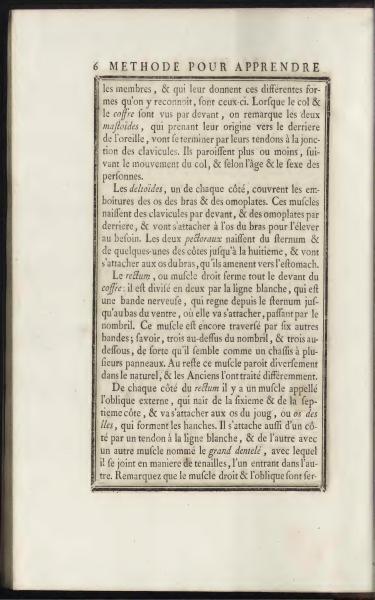Method for Learning
The muscles contributing to various forms of the body and recognized by these forms include the following. When the neck and chest are viewed from the front, the two mastoids are observed, originating behind the ear and ending at the collarbone through their tendons. These appear more or less prominent depending on neck movement, and the individual's age and gender.
The deltoids on each side cover the shoulder joints of the arms and shoulder blades. These muscles originate from the clavicles in front and the shoulder blades at the back, attaching to the arm bone to lift it as needed. The two pectorals originate from the sternum and some of the ribs up to the eighth, attaching to the arm bones, drawing them toward the stomach.
The rectus, or straight muscle, fully covers the front of the chest: it is divided into two by the linea alba, a fibrous band running from the sternum to the lower abdomen, attaching near the navel. This muscle is further intersected by six other bands: three above the navel, and three below, giving it the appearance of a multi-paneled frame. In its natural state, this muscle appears differently, and the Ancients treated it in varied ways.
On each side of the rectus is a muscle called the external oblique, originating from the sixth and seventh ribs, attaching to the iliac bones that form the hips. It also attaches on one side via a tendon to the linea alba, and with another muscle called the serratus anterior, interlocking so that one enters the other like pincers. Note that the rectus and the oblique are closely aligned.
The text discusses the muscles around the neck, chest, and abdomen, explaining their positions and roles. It includes descriptions of the mastoids, deltoids, pectorals, and rectus muscles, among others. The text also explains how these muscles were understood and depicted differently by ancient anatomists.
